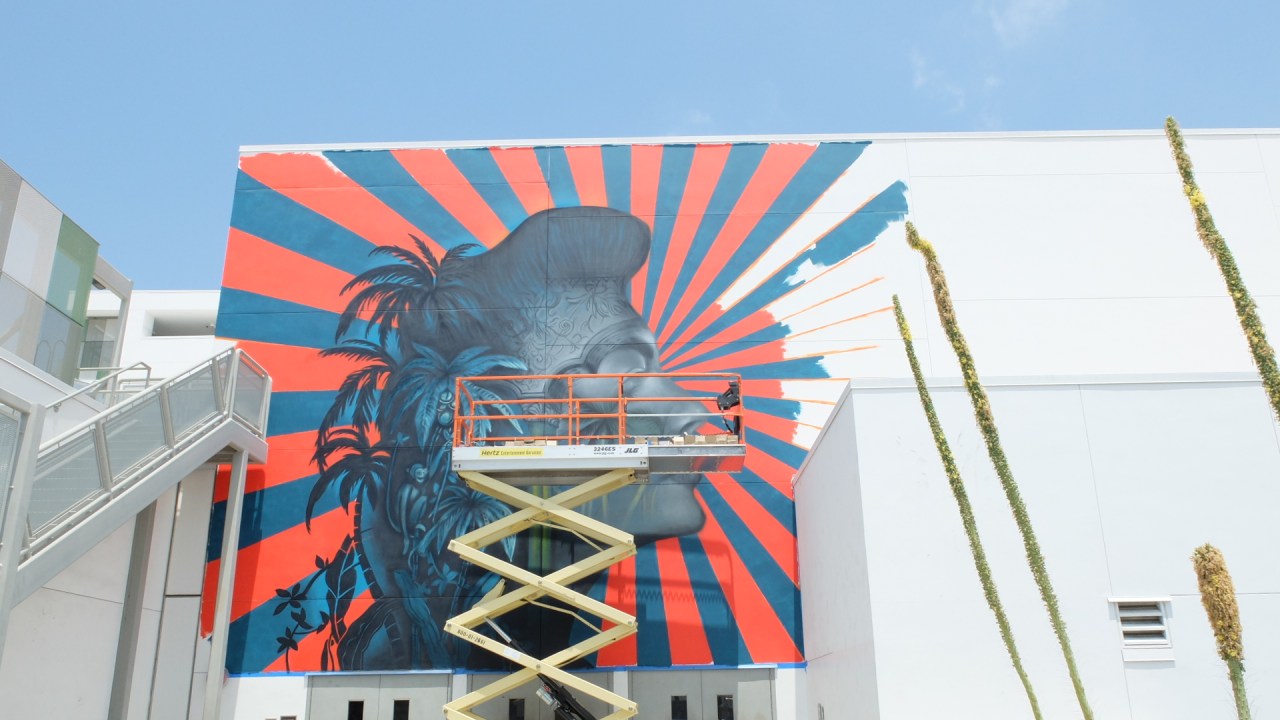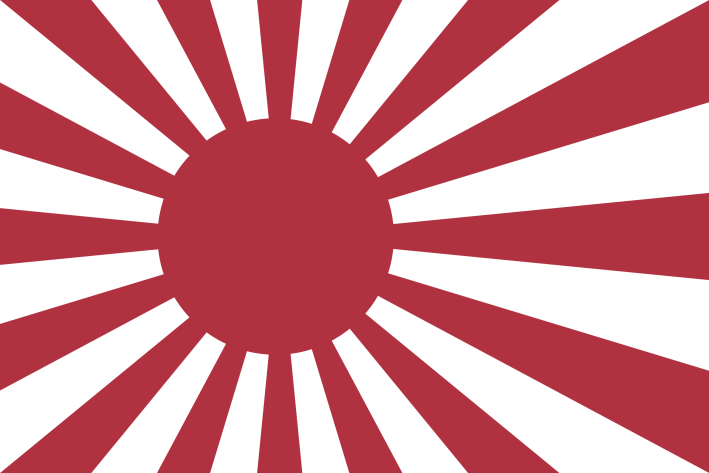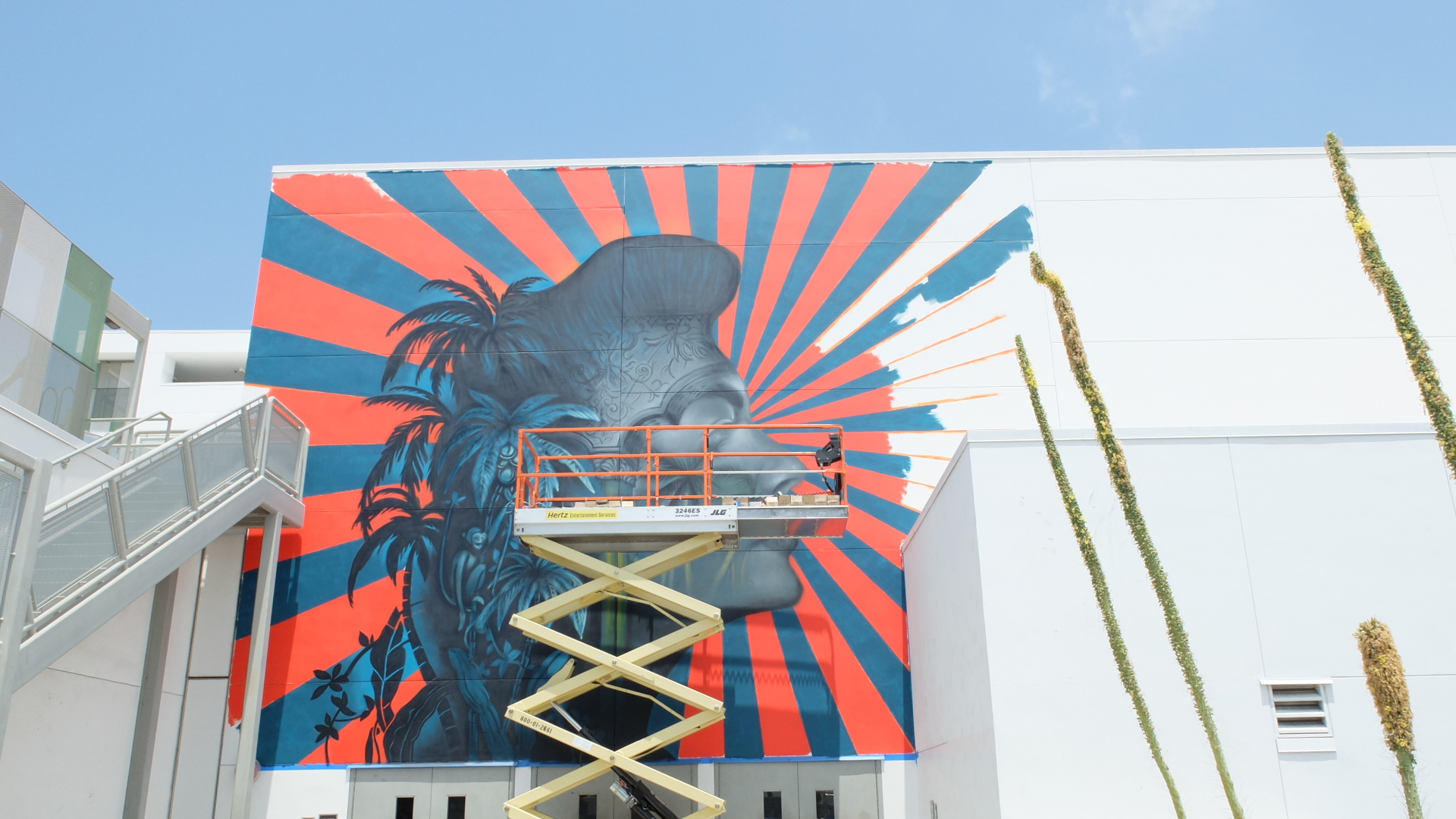[dropcap size=big]I[/dropcap]f the Los Angeles school district moves forward with plans to paint over a mural at a campus in Koreatown, it could also lose a separate campus mural by artist Shepard Fairey, in a brewing cultural and political controversy that has caught much of the L.A. arts and education communities off guard.
“If Beau Stanton’s Ava Gardner mural is removed from the Robert F. Kennedy school I have chosen to insist that my portrait mural of Robert F. Kennedy be removed also,” Fairey said in a statement on Instagram.
The school district had announced this month that it would erase Beau Stanton’s mural paying homage to Ava Gardner, after a group of Korean-American activists complained. Members of the Wilshire Community Coalition object to a representation of sun rays radiating out from around Gardner’s profile at the center of the mural. They say the rays look disturbingly similar to the sun rays radiating out from a symbol of the rising sun on the Japanese imperial battle flag.
[UPDATE: 6:15 pm] LAUSD has put its decision to remove the mural on hold until after January 7. "As a result of the extensive input, there is a need to have additional conversation. Therefore, we will not be taking immediate action on the mural at this time,” district official Eugene Hernandez said in a statement.
According to Jeong “Jake” Chan-yong, a lawyer and president of the Wilshire Community Coalition, his members are willing to wait and continue the conversation.
“It is more about discussing and coming up with a community consensus after discussing everything together. We will discuss it with everybody. That is generally the plan,” Chan-yong told L.A. Taco by phone after hearing the postponement news. He also raised a concern that the Koreatown community's complaints are typically ignored in Los Angeles.
“I did appreciate the comments about the freedom of expression and censorship,” Jeong said. “And I do understand that Mr. Stanton didn’t mean anything bad. But at the same time, everybody should also understand where the Korean community is coming from.”
Millions of Asians in the United States and around the world associate that flag with mass murder, rape, and other atrocities by Imperial Japan in the 1930s and during World War II.
“I’m proud of that mural,” Fairey told the L.A. Times, of his own work. “I’d love for that mural to stay, but this is the only leverage I have.” The L.A.-based artist is perhaps best known to mainstream culture for the Barack Obama “Hope” poster.
The Robert F. Kennedy Community Schools is a campus for six charter-like schools built on the site of RFK’s infamous assassination. Robert Kennedy was murdered at the site of the then-Ambassador Hotel in 1968.
The mural was part of massive campaign to get 30 artists involved at the campus during a one-week span in May 2016. Besides Stanton’s work and Fairey’s, murals at the school were painted by Kenny Scharf, David Flores, Yoskay Yamamoto, Jose Maradiaga-Andrade, and Paige Smith.

Fairey said the L.A. Unified School District acted too hastily when it acquiesced to these complaints, which arose in recent months.
“I sympathize with all victims of injustice, including Koreans who suffered at the hands of the Japanese,” he said. “But perpetrating another injustice by removing Beau Stanton’s mural based on false claims that it represents the Japanese battle flag, where no such connection exists, is foolish and selfish.”
Stanton said his mural was inspired by the history of the Coconut Grove nightclub, located at the Ambassador. Stanton and others have pointed out the rays of light background is common in many of his works.
“I disagree with the characterization that the L.A. United somehow caved in to our demands. It wasn’t caving in,” Chan-yong said on KPCC’s AirTalk early Monday morning.

Jeong compared the reaction from the school district to what clothing brand Zara did when confronted with the resemblance one of its shirts had to uniforms worn during the Holocaust. The blue-and-white striped shirt designed for toddlers featured a six-pointed gold badge. It was meant to be Wild West-inspired, but to some people it looked like an eerie reminder of concentration camp clothing victims of the Holocaust wore.
Zara didn’t intend to design clothing that was a symbol of genocide, Jeong said, but they removed it out of sensitivity to the Jewish community.
In a Facebook post, the Wilshire Community Coalition detailed the some of the atrocities committed on Asian women under the army's flag during WWII. So-called "Comfort Women" were war prisoners forced to "provide sexual services to the Japanese army under the Rising Sun Flag! They were raped and assaulted constantly."
RELATED: Crenshaw Black Panther Mural Defaced by Swastikas Is Already Fixed







